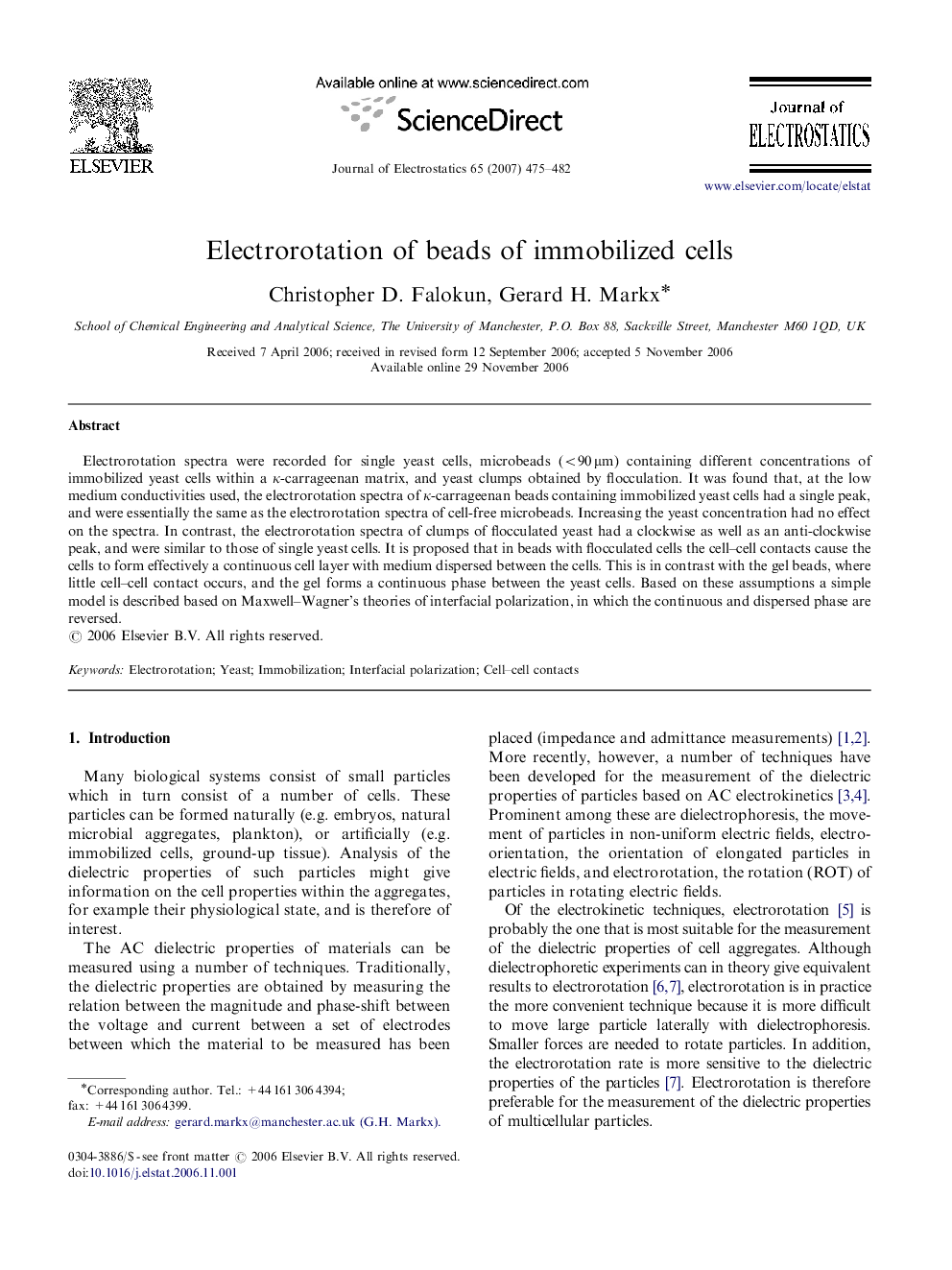| Article ID | Journal | Published Year | Pages | File Type |
|---|---|---|---|---|
| 725889 | Journal of Electrostatics | 2007 | 8 Pages |
Electrorotation spectra were recorded for single yeast cells, microbeads (<90 μm) containing different concentrations of immobilized yeast cells within a κ-carrageenan matrix, and yeast clumps obtained by flocculation. It was found that, at the low medium conductivities used, the electrorotation spectra of κ-carrageenan beads containing immobilized yeast cells had a single peak, and were essentially the same as the electrorotation spectra of cell-free microbeads. Increasing the yeast concentration had no effect on the spectra. In contrast, the electrorotation spectra of clumps of flocculated yeast had a clockwise as well as an anti-clockwise peak, and were similar to those of single yeast cells. It is proposed that in beads with flocculated cells the cell–cell contacts cause the cells to form effectively a continuous cell layer with medium dispersed between the cells. This is in contrast with the gel beads, where little cell–cell contact occurs, and the gel forms a continuous phase between the yeast cells. Based on these assumptions a simple model is described based on Maxwell–Wagner's theories of interfacial polarization, in which the continuous and dispersed phase are reversed.
